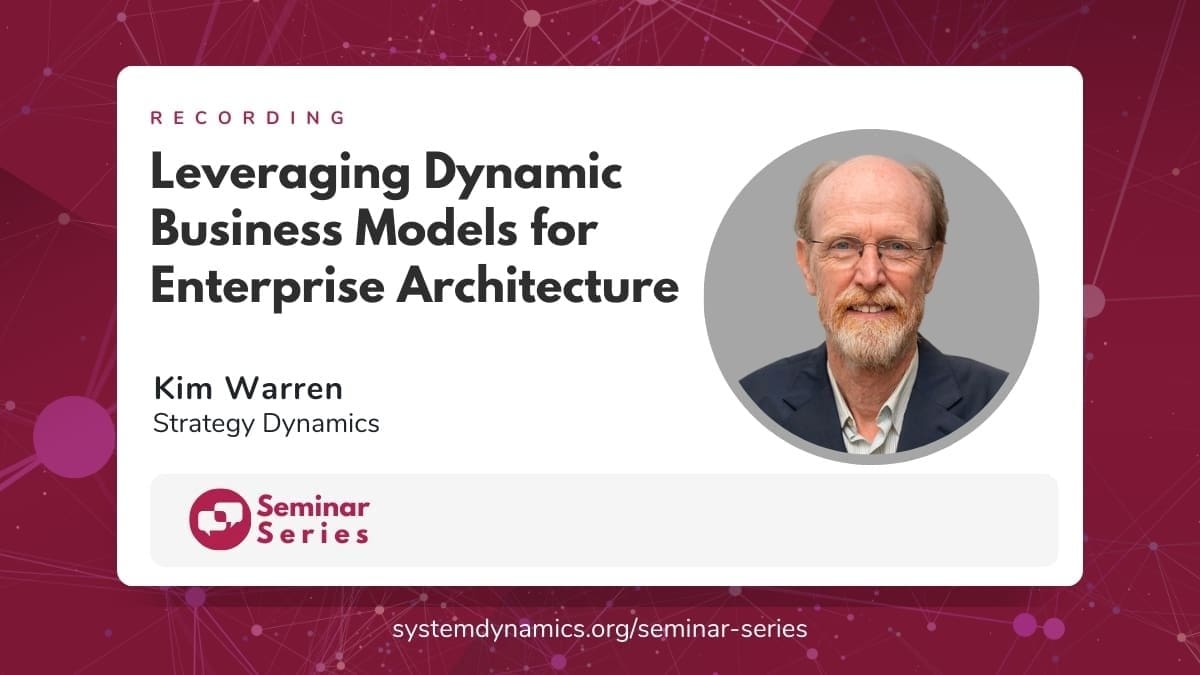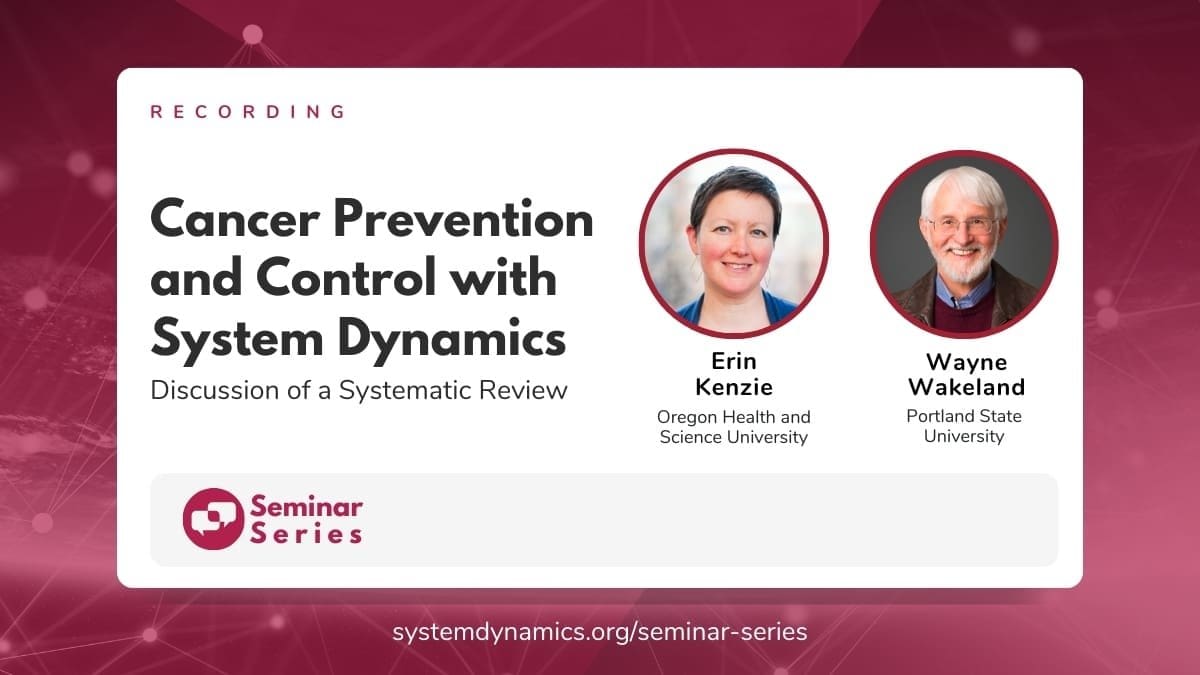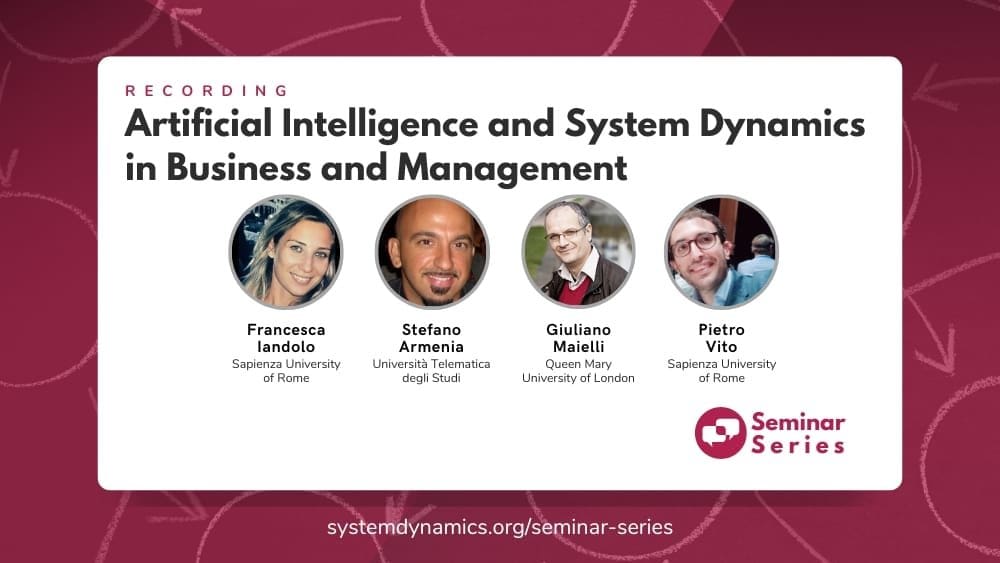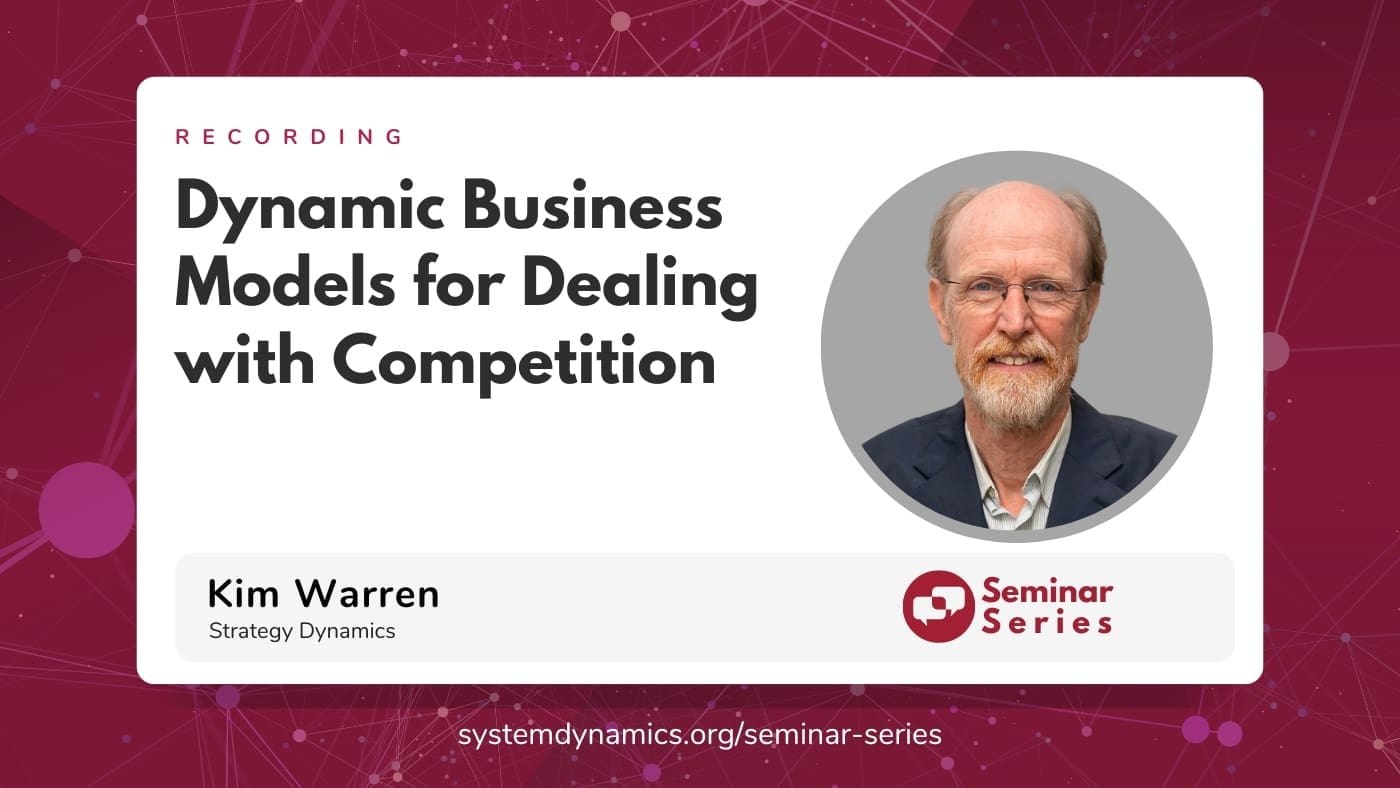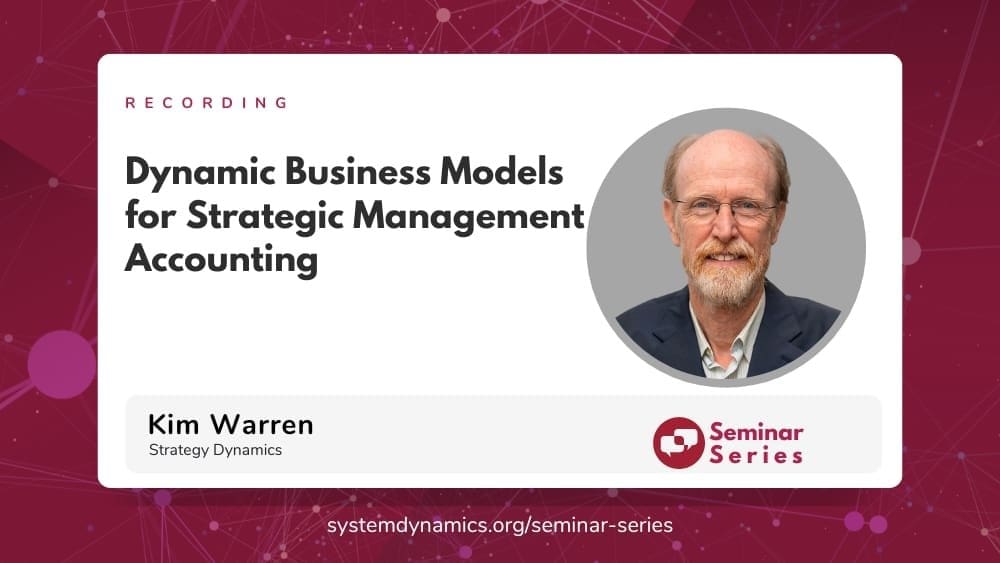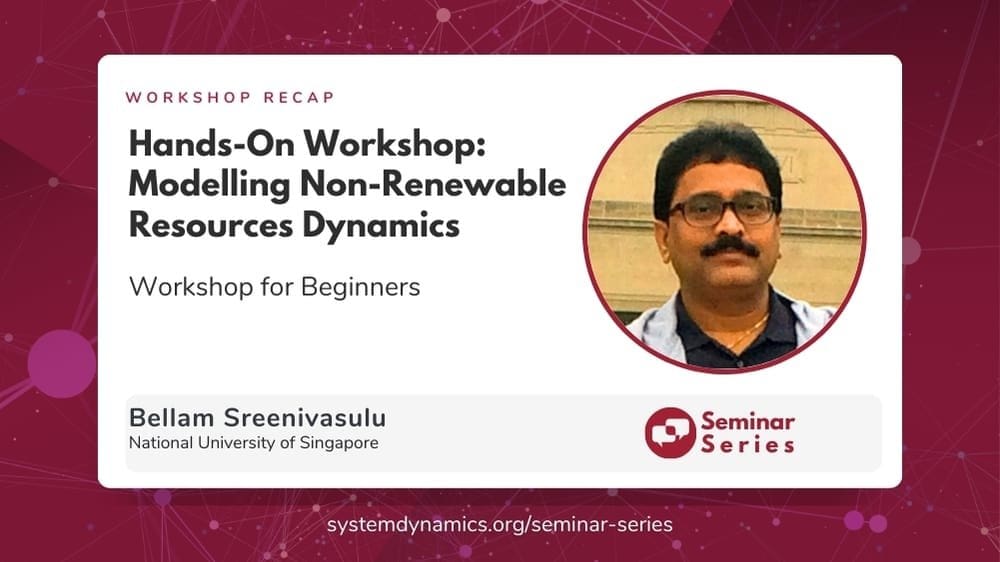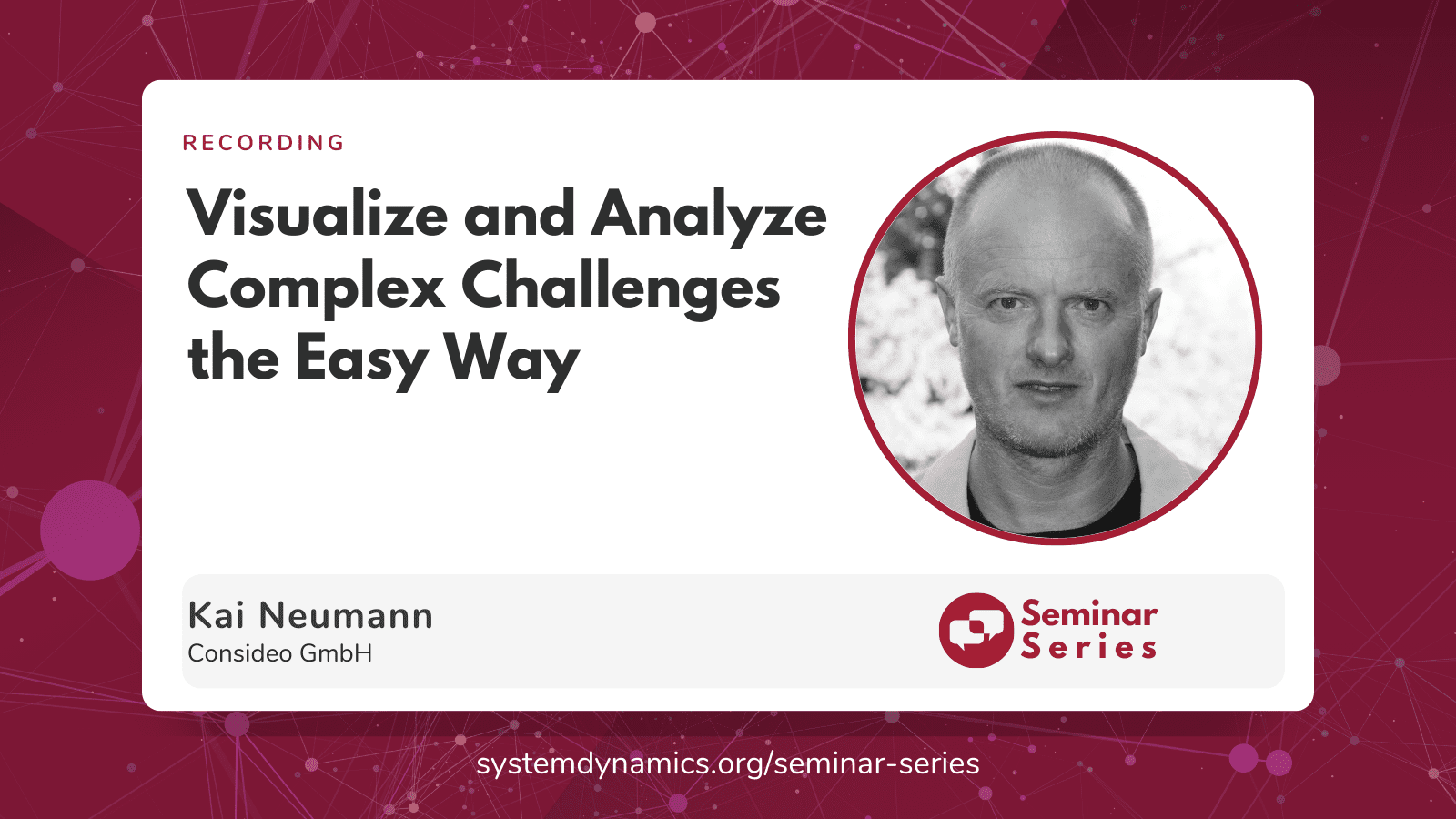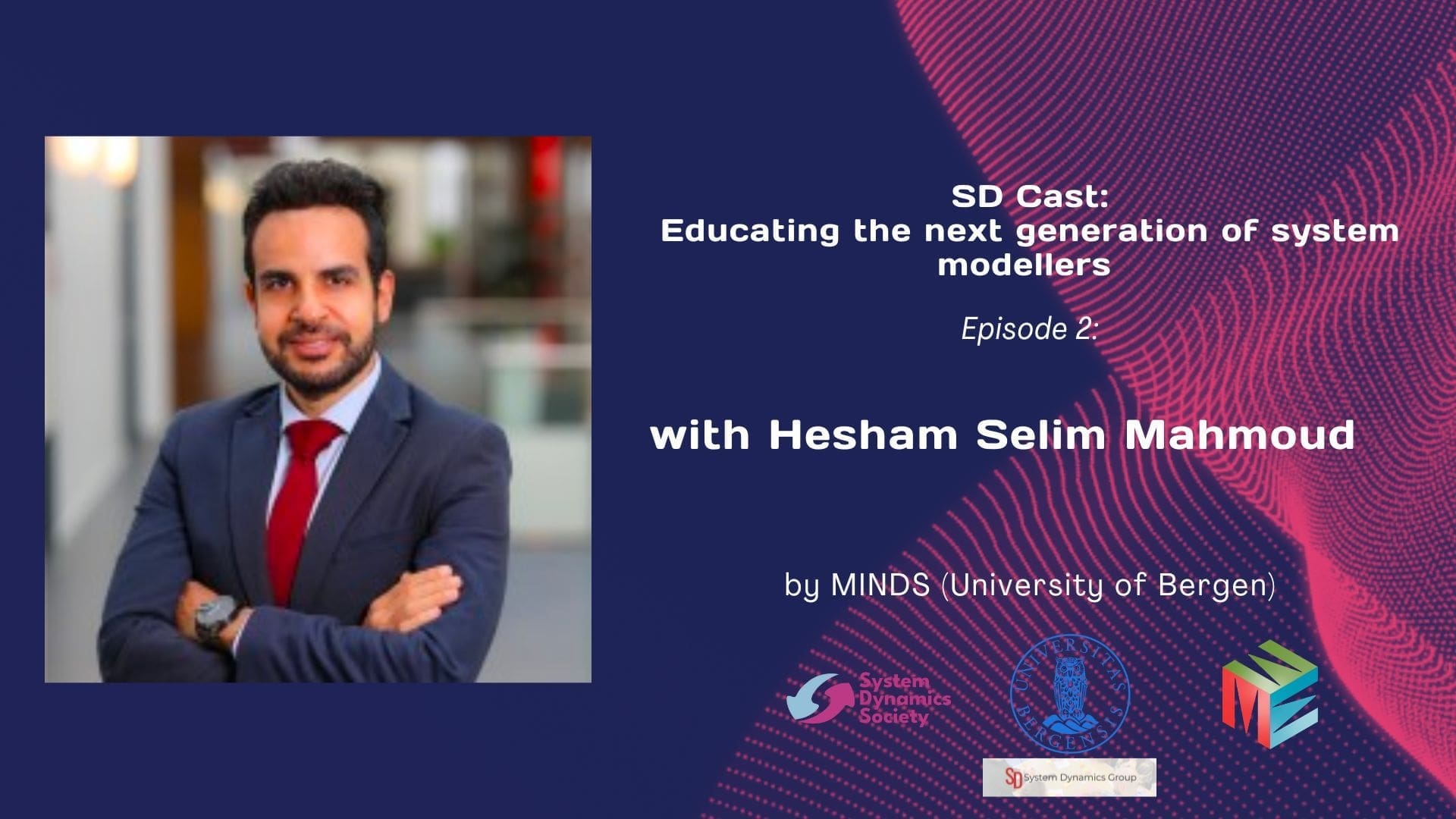Leveraging Dynamic Business Models for Enterprise Architecture
In the session Leveraging Dynamic Business Models for Enterprise Architecture, part of the System Dynamics for Business Innovation series led by Kim Warren, the conversation centered on enriching Enterprise Architectures (EAs) through the integration of quantitative Dynamic Business Models (DBMs). This approach significantly amplifies the efficacy and reliability of IT strategies and planning.
Course
Dynamic Business Modelling
How to build powerful living models of plans or issues in half the time of using spreadsheets
Key Insights:
- Foundation of Enterprise Architectures (EAs):
- EAs provide a structural blueprint for IT strategy development, focusing on the organization’s processes and how these support its operational goals.
- The webinar highlighted the importance of understanding these frameworks for implementing effective IT systems aligned with business objectives.
- Role of Dynamic Business Models (DBMs):
- DBMs contribute to a more robust EA by introducing quantitative analyses that validate and enhance the traditionally qualitative aspects of EA.
- By modeling business dynamics quantitatively, DBMs facilitate more accurate IT system alignment with strategic business goals, improving resource allocation and change management.
- Synergies between EAs and DBMs:
- The webinar illustrated how DBMs strengthen EAs by providing a rigorous analytical foundation that accelerates and refines the architecture building process.
- These models help predict the impact of IT strategies on business performance, making implementation more effective.
- Applications and Validation:
- DBMs offer a structured approach to testing and validating IT strategies before full-scale implementation, ensuring that IT plans are both effective and aligned with overarching business strategies.
- The session underscored the utility of DBMs in real-world applications, demonstrating their capacity to support complex decision-making across diverse business domains.
- Impact on IT Strategy and System Planning:
- Incorporating DBMs into EA efforts leads to more informed decision-making, with enhanced insights into the interactions between various business functions and IT systems.
- This integrated approach supports a proactive stance in IT strategy formulation, emphasizing continuous adaptation and alignment with business changes.
The webinar was particularly relevant for IT professionals, systems architects, business analysts, and strategic managers. It also offered critical insights for academics and students in business and technology disciplines.
Watch the recording below
Whoops, this recording is available for members and ticket purchasers only. Please login to verify. If you’re not a member, purchase a membership here. You can also buy a ticket to watch the recording here.
About the Speaker
Kim Warren is an experienced strategy professional, teacher, and publisher of online courses and teaching resources on business modeling – fast becoming a mainstream capability for executives, consultants, and business students. He was awarded the Jay Wright Forrester Award by the International System Dynamics Society in 2005 and was the Society’s President in 2013.
Recent Posts
Call for Presenters: Seminar Series
Call for Presenters: Seminar Series We at the System Dynamics Society are continually seeking vibrant and knowledgeable presenters for our ongoing Seminar Series. As we unfold the calendar, there’s always a place for more insights, experiences, and expertise to enrich...
Honoring Excellence: A Glimpse into the Awards of the International System Dynamics Conference
Honoring Excellence: A Glimpse into the Awards of the International System Dynamics Conference The International System Dynamics Conference brings together experts, practitioners, and students to exchange ideas, showcase real-world applications, and celebrate...
From Bergen to Global: UiB’s System Dynamics Group
From Bergen to Global: UiB’s System Dynamics Group The System Dynamics Group, an autonomous research group at the University of Bergen (UiB) was established in 1971 by professor emeritus Svein Nordbotten. Inspired by the work of Jay W. Forrester, Nordbotten...
Upcoming Events
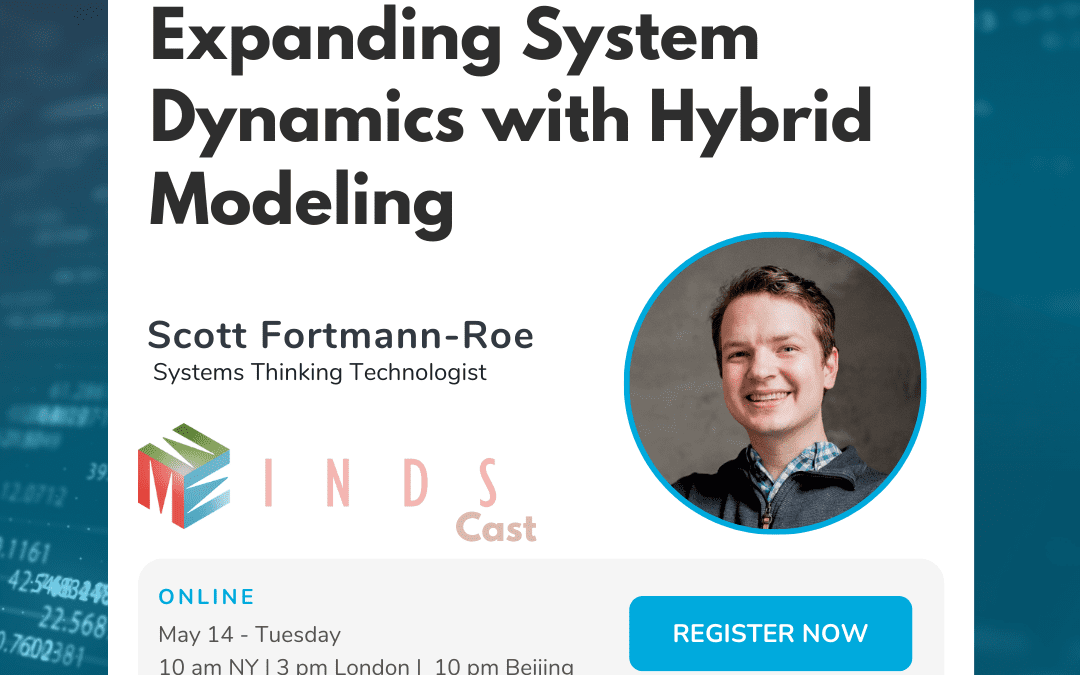
MINDS Cast Ep. 5 – Expanding System Dynamics with Hybrid Modeling w/ Scott Fortmann
This talk discusses extensions to System Dynamics modeling to integrate other modeling methods, notably Agent-Based Modeling. We will explore techniques for Agent-Based Modeling and how to integrate them into System Dynamics models; we will see how to extend...
Recent Business cases
Solving Bottlenecks in Dairy Production Facilities with System Dynamics
Solving Bottlenecks in Dairy Production Facilities with System Dynamics EXECUTIVE Summary FrieslandCampina faced potential bottlenecks in production due to the merging of two factories. They hired SD&Co which employed system dynamics simulation models to predict...
A Design Value Calculator: A System Dynamics Boardgame
A Design Value Calculator: A System Dynamics Boardgame EXECUTIVE Summary Product design is a specific form of complex innovation that touches all areas of an organization’s management. While entrepreneurs recognise the value of design, they often tend to focus...
The World Bank Uses System Dynamics to Identify Root Causes of Poverty
The World Bank Uses System Dynamics to Identify Root Causes of Poverty EXECUTIVE Summary Madagascar has one of the highest poverty rates in the world. In 2022, an astonishingly three out of every four people in Madagascar lived below the poverty line. Poverty has...
Join us
Cancer Prevention and Control with System Dynamics
The webinar titled “Cancer Prevention and Control with System Dynamics” presented a systematic review focused on the use of System Dynamics modeling in the field of cancer research. The main objective was to evaluate how this methodology is applied across various studies to address complex issues in cancer prevention and control, including treatments, risk assessments, and intervention strategies.
System Dynamics Modeling for Cancer Prevention and Control: A Systematic Review
Key insights from the webinar included:
- Application of System Dynamics: The review detailed how both simulation models and causal-loop diagrams are utilized to study the dynamics of cancer-related issues, ranging from chemotherapy effectiveness to the impacts of environmental contaminants on cancer risks.
- Quality Assessment: The studies were assessed for quality based on criteria like clarity of objectives, adequacy of information sources, and the involvement of stakeholders. This highlighted a need for more rigorous standards in modeling to enhance reliability and applicability.
- Focus Areas and Interventions: The research covered diverse topics such as the effectiveness of cancer treatments, prevention through behavioral changes, and early detection techniques. It also underscored the importance of System Dynamics in modeling interventions like tobacco use reduction and vaccination strategies.
- Recommendations for Improvement: The presentation stressed the necessity for greater transparency and rigor in System Dynamics studies within cancer research. It called for the development of supportive infrastructures and best practices to foster multidisciplinary collaborations.
The presenters, Erin Kenzie and Wayne Wakeland, through their extensive backgrounds in systems science and health policy, emphasized the potential of System Dynamics to offer comprehensive insights and effective solutions in cancer prevention and control.
For those interested in exploring innovative methodologies and their practical applications in addressing complex health issues, watching the recording of this webinar is highly recommended. It promises valuable learnings in System Dynamics and its significant role in advancing cancer research.
Watch the recording below
Whoops, this recording is available for members and ticket purchasers only. Please login to verify. If you’re not a member, purchase a membership here. You can also buy a ticket to watch the recording here.
PRESENTERS
Erin Kenzie is an Assistant Professor at the OHSU-PSU School of Public Health at Oregon Health and Science University in Portland, Oregon and holds faculty roles at the Portland State University System Science Program and the Oregon Rural Practice-based Research Network. She received her PhD in Systems Science from PSU in 2021. Dr. Kenzie’s research spans system dynamics, implementation science, and public health. She has been involved in research applying System Dynamics to colorectal cancer screening, behavioral health system capacity, unhealthy alcohol use screening and treatment, rural Veteran access to care, health plan-clinic partnerships, behavioral health integration, traumatic brain injury recovery, and climate change mitigation behavior.
Wayne Wakeland is Professor Emeritus of Systems Science at Portland State University. He also served as the Systems Science Program Chair for many years. He earned a B.S. and a Master of Engineering at Harvey Mudd College (1973); and a Ph.D. in Systems Science at Portland State U. (1977). He developed and taught courses on computer simulation methods and more recently a course on system sustainability and organizational resilience. His research focused on the use of computational models for studying a variety of topics, including complications during human pregnancy, recovery from concussion, and policies to reduce opioid drug diversion, abuse, and overdose deaths. Other topics included environmental/ecological sustainability and elevated intracranial pressure due to traumatic brain injusy. He has been active in the System Dynamics Society for many years and helps lead its Health Policy Special Interest Group.
Recent Posts
Call for Presenters: Seminar Series
Call for Presenters: Seminar Series We at the System Dynamics Society are continually seeking vibrant and knowledgeable presenters for our ongoing Seminar Series. As we unfold the calendar, there’s always a place for more insights, experiences, and expertise to enrich...
Honoring Excellence: A Glimpse into the Awards of the International System Dynamics Conference
Honoring Excellence: A Glimpse into the Awards of the International System Dynamics Conference The International System Dynamics Conference brings together experts, practitioners, and students to exchange ideas, showcase real-world applications, and celebrate...
From Bergen to Global: UiB’s System Dynamics Group
From Bergen to Global: UiB’s System Dynamics Group The System Dynamics Group, an autonomous research group at the University of Bergen (UiB) was established in 1971 by professor emeritus Svein Nordbotten. Inspired by the work of Jay W. Forrester, Nordbotten...
Upcoming Events

MINDS Cast Ep. 5 – Expanding System Dynamics with Hybrid Modeling w/ Scott Fortmann
This talk discusses extensions to System Dynamics modeling to integrate other modeling methods, notably Agent-Based Modeling. We will explore techniques for Agent-Based Modeling and how to integrate them into System Dynamics models; we will see how to extend...
Recent Business cases
Solving Bottlenecks in Dairy Production Facilities with System Dynamics
Solving Bottlenecks in Dairy Production Facilities with System Dynamics EXECUTIVE Summary FrieslandCampina faced potential bottlenecks in production due to the merging of two factories. They hired SD&Co which employed system dynamics simulation models to predict...
A Design Value Calculator: A System Dynamics Boardgame
A Design Value Calculator: A System Dynamics Boardgame EXECUTIVE Summary Product design is a specific form of complex innovation that touches all areas of an organization’s management. While entrepreneurs recognise the value of design, they often tend to focus...
The World Bank Uses System Dynamics to Identify Root Causes of Poverty
The World Bank Uses System Dynamics to Identify Root Causes of Poverty EXECUTIVE Summary Madagascar has one of the highest poverty rates in the world. In 2022, an astonishingly three out of every four people in Madagascar lived below the poverty line. Poverty has...
Join us
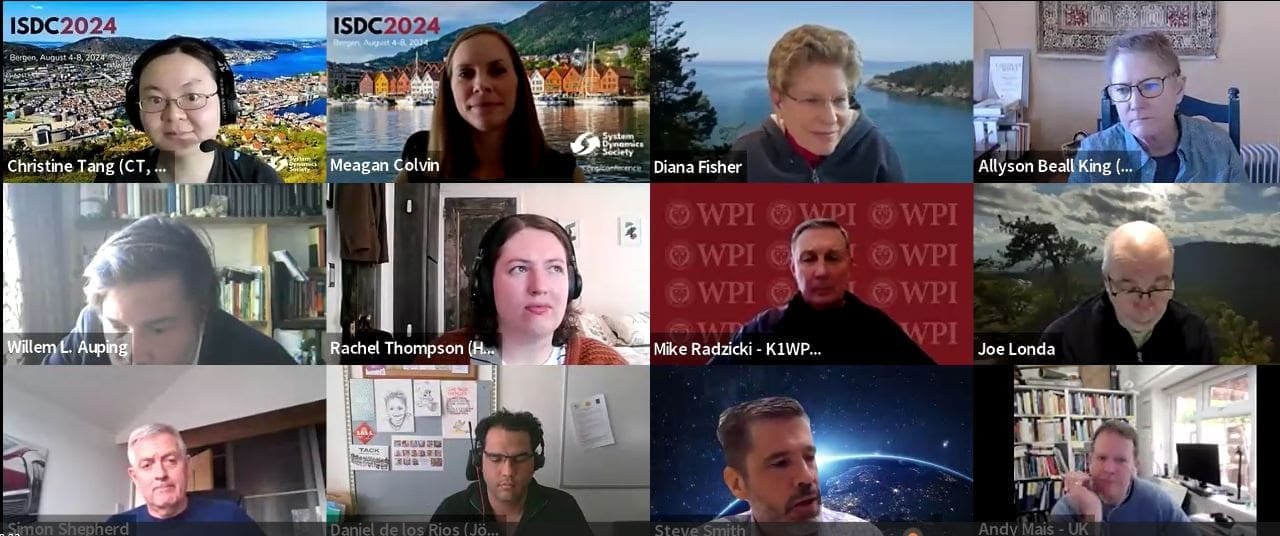
Member Orientation
The System Dynamics Society has recently hosted a New Member Orientation aimed at introducing new participants in the community. The session, led by SDS President, Allyson Beall King, and Director of Outreach, Meagan Colvin, provided an overview of the Society’s structure, mission, and opportunities for member involvement. The agenda included an introduction to the Society’s objectives, its staff, and the myriad of resources it offers.
Highlights from the Orientation
Introduction to Staff and Structure: The session provided detailed information on the organizational structure of the Society, introducing key personnel and their roles within the Society, from various locations around the globe.
Member Resources and Benefits: The orientation highlighted several benefits for members, such as:
- Discount on conference registration fee
- Free access to all seminars and recordings
- Reduced prices and some free courses for online learning.
- Free access to the System Dynamics Review.
- Membership in various Special Interest Groups (SIG) and Chapters with networking opportunities.
Interactive Sessions: The event included a question-and-answer segment where participants engaged directly with leaders, enhancing the interactive nature of the orientation.
Networking Opportunities: There was a special segment for networking, where Chapter and SIG leaders introduced themselves and shared insights into their activities, promoting community interaction among members.
The New Member Orientation underscored the System Dynamics Society’s commitment to providing valuable resources and fostering a collaborative environment. It emphasized the Society’s dedication to tackling significant global issues through System Dynamics.
For those interested in a deeper understanding of the membership benefits and to hear firsthand from Society leaders, we encourage watching the recording of the event. This will provide prospective and current members with a comprehensive view of the opportunities available within the System Dynamics Society.
Watch the recording below
Recent Posts
Call for Presenters: Seminar Series
Call for Presenters: Seminar Series We at the System Dynamics Society are continually seeking vibrant and knowledgeable presenters for our ongoing Seminar Series. As we unfold the calendar, there’s always a place for more insights, experiences, and expertise to enrich...
Honoring Excellence: A Glimpse into the Awards of the International System Dynamics Conference
Honoring Excellence: A Glimpse into the Awards of the International System Dynamics Conference The International System Dynamics Conference brings together experts, practitioners, and students to exchange ideas, showcase real-world applications, and celebrate...
From Bergen to Global: UiB’s System Dynamics Group
From Bergen to Global: UiB’s System Dynamics Group The System Dynamics Group, an autonomous research group at the University of Bergen (UiB) was established in 1971 by professor emeritus Svein Nordbotten. Inspired by the work of Jay W. Forrester, Nordbotten...
Upcoming Events

MINDS Cast Ep. 5 – Expanding System Dynamics with Hybrid Modeling w/ Scott Fortmann
This talk discusses extensions to System Dynamics modeling to integrate other modeling methods, notably Agent-Based Modeling. We will explore techniques for Agent-Based Modeling and how to integrate them into System Dynamics models; we will see how to extend...
Recent Business cases
Solving Bottlenecks in Dairy Production Facilities with System Dynamics
Solving Bottlenecks in Dairy Production Facilities with System Dynamics EXECUTIVE Summary FrieslandCampina faced potential bottlenecks in production due to the merging of two factories. They hired SD&Co which employed system dynamics simulation models to predict...
A Design Value Calculator: A System Dynamics Boardgame
A Design Value Calculator: A System Dynamics Boardgame EXECUTIVE Summary Product design is a specific form of complex innovation that touches all areas of an organization’s management. While entrepreneurs recognise the value of design, they often tend to focus...
The World Bank Uses System Dynamics to Identify Root Causes of Poverty
The World Bank Uses System Dynamics to Identify Root Causes of Poverty EXECUTIVE Summary Madagascar has one of the highest poverty rates in the world. In 2022, an astonishingly three out of every four people in Madagascar lived below the poverty line. Poverty has...
Join us
Artificial Intelligence and System Dynamics in Business and Management
The recent webinar, titled “The Dynamic Interplay Between Artificial Intelligence (AI) and System Dynamics (SD) in Business and Management,” provided deep insights into the evolving relationship between AI and SD. This session was part of the System Dynamics Society’s ongoing Seminar Series. It aimed to dissect the convergence of AI and SD within the business and management landscapes.
Key Takeaways from the Webinar:
- In-Depth Bibliometric Analysis: The session kicked off with a comprehensive bibliometric analysis, highlighting how academic discussions on System Dynamics and AI intersect, charting their evolution and emerging patterns. This approach provided a solid base for understanding the convergence trajectory of these fields.
- Advanced Topic Modeling Discoveries: The webinar delved into the intricacies of AI and SD integration through cutting-edge topic modeling techniques. This analysis offered a detailed perspective on how these fields are blending, adding depth to our understanding.
- Dual Convergence Pathways: The discussion highlighted two main convergence pathways: ‘soft convergence’ and ‘hard convergence.’ Soft convergence looks at how AI augments SD with a focus on social dynamics, while hard convergence explores AI’s role in reengineering system design and interdependencies.
- Emerging Trends and Strategic Implications: An interesting aspect of the session was the exploration of current trends. It was noted that soft convergence is more prevalent in today’s business landscape, but hard convergence is gaining momentum and could revolutionize SD research and application.
- Practical Applications of AI and SD: The session also covered how AI technologies are being used across various domains like healthcare, risk management, and customer service, providing real-world examples of their impact.
- Theoretical Framework Necessity: A crucial point raised was the need for a convincing theoretical framework to effectively combine AI’s data-based approaches with SD’s organizational strategies.
In closing, this seminar not only presented an analysis of AI and SD convergence but also invited scholars, researchers, and industry practitioners to further explore this synergy. The insights gained from this webinar are invaluable for anyone interested in the intersection of these two fields.
Watch the recording below
Whoops, this recording is available for members and ticket purchasers only. Please login to verify. If you’re not a member, purchase a membership here. You can also buy a ticket to watch the recording here.
About the Speakers
Francesca Iandolo, PhD: A Tenure-track Assistant Professor in Management at Sapienza University of Rome, Francesca Iandolo specializes in corporate sustainability and technology in digital platforms. With a master’s in accounting and a PhD focusing on the Viable Systems Approach, she actively contributes to academic coordination and research, and consults for private companies.
Giuliano Maielli: Researcher in business history and organization studies, focuses on technological and organizational innovation. His work, emphasizing design hierarchies, path-dependence, and socio-organizational phenomena, delves into platform innovation dynamics and the Internet of Things, contributing significantly to peer-reviewed academic publications.
Stefano Armenia: Tenure-track Lecturer at the Università Telematica degli Studi in Florence, specializes in Business Organizations and Dynamical Systems. With a background in Computer Engineering and Business Engineering, he contributes to System Dynamics societies, edits scientific journals, and researches in fields ranging from cybersecurity to sustainable transportation.
Pietro Vito, PhD: A researcher in Economics and Business Management at Sapienza University of Rome, Pietro Vito’s research spans systemic and vital perspectives in business management. His interests include sustainability, environmental protection, intellectual capital, and artificial intelligence, contributing to a broader understanding of management methodologies.
Recent Posts
Call for Presenters: Seminar Series
Call for Presenters: Seminar Series We at the System Dynamics Society are continually seeking vibrant and knowledgeable presenters for our ongoing Seminar Series. As we unfold the calendar, there’s always a place for more insights, experiences, and expertise to enrich...
Honoring Excellence: A Glimpse into the Awards of the International System Dynamics Conference
Honoring Excellence: A Glimpse into the Awards of the International System Dynamics Conference The International System Dynamics Conference brings together experts, practitioners, and students to exchange ideas, showcase real-world applications, and celebrate...
From Bergen to Global: UiB’s System Dynamics Group
From Bergen to Global: UiB’s System Dynamics Group The System Dynamics Group, an autonomous research group at the University of Bergen (UiB) was established in 1971 by professor emeritus Svein Nordbotten. Inspired by the work of Jay W. Forrester, Nordbotten...
Upcoming Events

MINDS Cast Ep. 5 – Expanding System Dynamics with Hybrid Modeling w/ Scott Fortmann
This talk discusses extensions to System Dynamics modeling to integrate other modeling methods, notably Agent-Based Modeling. We will explore techniques for Agent-Based Modeling and how to integrate them into System Dynamics models; we will see how to extend...
Recent Business cases
Solving Bottlenecks in Dairy Production Facilities with System Dynamics
Solving Bottlenecks in Dairy Production Facilities with System Dynamics EXECUTIVE Summary FrieslandCampina faced potential bottlenecks in production due to the merging of two factories. They hired SD&Co which employed system dynamics simulation models to predict...
A Design Value Calculator: A System Dynamics Boardgame
A Design Value Calculator: A System Dynamics Boardgame EXECUTIVE Summary Product design is a specific form of complex innovation that touches all areas of an organization’s management. While entrepreneurs recognise the value of design, they often tend to focus...
The World Bank Uses System Dynamics to Identify Root Causes of Poverty
The World Bank Uses System Dynamics to Identify Root Causes of Poverty EXECUTIVE Summary Madagascar has one of the highest poverty rates in the world. In 2022, an astonishingly three out of every four people in Madagascar lived below the poverty line. Poverty has...
Join us
Dynamic Business Models for Dealing with Competition
In the latest webinar of the System Dynamics for Business Innovation special series, Kim Warren delved into Dynamic Business Models for Dealing with Competition. This session, rich in practical advice and strategic insights, is pivotal for professionals seeking to sharpen their competitive edge. Here’s a breakdown of the webinar’s key points.
Key Takeaways from the Webinar:
- Understanding Competitive Dynamics: The session focused on the use of dynamic business models to navigate competitive business environments. Warren highlighted the importance of understanding how competition plays out in real-time and the impacts on prices, marketing spending, and profits.
- Case Studies and Applications: Warren used two illustrative case studies to demonstrate the practical application of these models. He discussed GSK’s travel vaccines business and its response to a new competitor, and Beyond Meat’s strategy in creating a market for non-meat products. Both cases highlighted the strategic challenges and responses in dynamic competitive environments.
- Types of Competition: Warren outlined three standard competition mechanisms, covering most competitive scenarios. These include racing to capture new potential customers, maintaining existing customers while attracting competitors’ customers, and handling situations where customers can switch between suppliers.
- Practical Strategy Development: The session also touched upon practical aspects of strategic planning, like leveraging dynamic models for both long-term strategy and short-term operational decision-making.
Invitation for Further Learning
This webinar is a must-watch for those interested in refining their competitive strategies and understanding the application of dynamic business models. Viewing the recording will provide a deeper insight into the discussed concepts.
Furthermore, the series will continue to offer rich content on strategic business areas such as IT systems architecture and environmental impact reporting. These upcoming sessions represent a unique opportunity to gain advanced knowledge and skills in the field.
Join us for the upcoming webinars to deepen your understanding of dynamic business models and their critical role in shaping successful competitive strategies
Certificate
Attendees who participate in at least 6 out of the 9 webinars in the series will be eligible to receive a certificate titled “Introduction to Dynamic Business Models.” This is an opportunity to gain recognition of your learning in this innovative field. For those who cannot attend live sessions, recordings will be available, allowing you to review the material and complete the series at your convenience.
Watch the recording to get your certificate code.
Watch the recording below
Whoops, this recording is available for members and ticket purchasers only. Please login to verify. If you’re not a member, purchase a membership here. You can also buy a ticket to watch the recording here.
About the Speaker
Kim Warren is an experienced strategy professional, teacher, and publisher of online courses and teaching resources on business modeling – fast becoming a mainstream capability for executives, consultants, and business students. He was awarded the Jay Wright Forrester Award by the International System Dynamics Society in 2005 and was the Society’s President in 2013.
Recent Posts
Call for Presenters: Seminar Series
Call for Presenters: Seminar Series We at the System Dynamics Society are continually seeking vibrant and knowledgeable presenters for our ongoing Seminar Series. As we unfold the calendar, there’s always a place for more insights, experiences, and expertise to enrich...
Honoring Excellence: A Glimpse into the Awards of the International System Dynamics Conference
Honoring Excellence: A Glimpse into the Awards of the International System Dynamics Conference The International System Dynamics Conference brings together experts, practitioners, and students to exchange ideas, showcase real-world applications, and celebrate...
From Bergen to Global: UiB’s System Dynamics Group
From Bergen to Global: UiB’s System Dynamics Group The System Dynamics Group, an autonomous research group at the University of Bergen (UiB) was established in 1971 by professor emeritus Svein Nordbotten. Inspired by the work of Jay W. Forrester, Nordbotten...
Upcoming Events

MINDS Cast Ep. 5 – Expanding System Dynamics with Hybrid Modeling w/ Scott Fortmann
This talk discusses extensions to System Dynamics modeling to integrate other modeling methods, notably Agent-Based Modeling. We will explore techniques for Agent-Based Modeling and how to integrate them into System Dynamics models; we will see how to extend...
Recent Business cases
Solving Bottlenecks in Dairy Production Facilities with System Dynamics
Solving Bottlenecks in Dairy Production Facilities with System Dynamics EXECUTIVE Summary FrieslandCampina faced potential bottlenecks in production due to the merging of two factories. They hired SD&Co which employed system dynamics simulation models to predict...
A Design Value Calculator: A System Dynamics Boardgame
A Design Value Calculator: A System Dynamics Boardgame EXECUTIVE Summary Product design is a specific form of complex innovation that touches all areas of an organization’s management. While entrepreneurs recognise the value of design, they often tend to focus...
The World Bank Uses System Dynamics to Identify Root Causes of Poverty
The World Bank Uses System Dynamics to Identify Root Causes of Poverty EXECUTIVE Summary Madagascar has one of the highest poverty rates in the world. In 2022, an astonishingly three out of every four people in Madagascar lived below the poverty line. Poverty has...
Join us
Escape from Model Land – How Mathematical Models Can Lead Us Astray and What We Can Do About it
In the third episode of MINDS CAST, we had the privilege of engaging with Erica Thompson, the author of “Escape from Model Land” This session delved into the intricacies of using mathematical models in decision-making, highlighting both the potential benefits and the pitfalls of relying heavily on these models. Here, we summarize the key insights from this enlightening discussion, including Thompson’s perspectives on the role of models in understanding complex issues and the importance of critical engagement with these tools.
About the Presenter:
Dr. Erica Thompson, Associate Professor of Modelling for Decision Making at UCL’s Department of Science, Technology, Engineering, and Public Policy, brings a wealth of expertise to the topic. Her research focuses on the application of mathematical and computational models in decision-making, with a particular emphasis on developing techniques for assessing and interpreting models. As a Fellow of the London Mathematical Laboratory and a Visiting Senior Fellow at the LSE Data Science Institute, her work also delves into the philosophical aspects of model outputs and their integration with expert judgment in decision-making processes.
Webinar Overview:
- The Essence of Models in Decision-Making: Thompson opened the discussion by exploring the role of mathematical models in aiding our understanding of complex issues like economic regulation, climate change, and pandemics. She emphasized that while models are crucial tools, they do not produce perfect predictions of the future.
- Challenges in Mathematical and Social Contexts: The conversation highlighted the mathematical and social challenges in using models for decision-making. Drawing on examples from climate change and COVID-19, Thompson underscored the importance of recognizing the limitations and assumptions underlying these models.
- Best Practices for Responsible Modeling: The session also touched upon best practices for responsible modeling, especially in politically charged contexts. Thompson stressed the need for transparency, accountability, and the acknowledgment of value judgments embedded within models.
- Navigating Model Land: The concept of ‘Model Land’ – a metaphorical space where models exist in their idealized form – was a key focus. Thompson discussed the risks of becoming overly reliant on models and strategies for effectively navigating out of Model Land while still leveraging the benefits they offer.
Key Points from the Discussion:
- Model Diversity and Assumption Transparency: Thompson advocated for the diversity of models and perspectives in modeling processes. She emphasized the need for models to make their assumptions and biases explicit, allowing for more critical engagement and evaluation of their outputs.
- The Role of Experts in Modeling: The discussion also addressed the evolving concept of expertise in modeling. Thompson highlighted the importance of involving a range of experts in the modeling process to ensure diverse perspectives and assumptions are considered.
- Models as Conviction Narratives: Thompson described models as ‘conviction narratives,’ tools that provide a structured way of thinking about the future. She stressed the importance of understanding models as narratives that require translation and interpretation to be effectively used in decision-making.
- Future of Modeling: Looking ahead, Thompson envisioned a modeling landscape that is more integrally connected with social and political contexts. She called for models that are transparent about their value judgments and capable of incorporating diverse perspectives to enhance trust and utility in decision-making.
Erica Thompson’s insights in the MINDS CAST episode provide a valuable perspective on the complexities of mathematical modeling. Her emphasis on critical engagement, diversity of perspectives, and the need for transparency in modeling practices offers a roadmap for navigating the challenges and potentials of models in decision-making. As we continue to rely on models to understand and shape our world, Thompson’s call for a more nuanced and responsible approach to modeling is both timely and essential.
Watch the recording below
About the Speaker
Dr. Erica Thompson holds the position of Associate Professor of Modelling for Decision Making at UCL’s Department of Science, Technology, Engineering and Public Policy, where I work on a programme of research funded by a UKRI Future Leaders Fellowship. She is also a Fellow of the London Mathematical Laboratory, where she leads the research programme on Inference from Models, and a Visiting Senior Fellow at the LSE Data Science Institute.
Her research focuses on leveraging mathematical and computational models to guide decision-making in practical contexts. Dr. Thompson has dedicated her efforts to developing mathematical and statistical techniques for assessing and interpreting models. Additionally, she explores essential philosophical inquiries concerning the true significance of model outputs and the integration of models with expert judgement in decision-making processes.
Recent Posts
Call for Presenters: Seminar Series
Call for Presenters: Seminar Series We at the System Dynamics Society are continually seeking vibrant and knowledgeable presenters for our ongoing Seminar Series. As we unfold the calendar, there’s always a place for more insights, experiences, and expertise to enrich...
Honoring Excellence: A Glimpse into the Awards of the International System Dynamics Conference
Honoring Excellence: A Glimpse into the Awards of the International System Dynamics Conference The International System Dynamics Conference brings together experts, practitioners, and students to exchange ideas, showcase real-world applications, and celebrate...
From Bergen to Global: UiB’s System Dynamics Group
From Bergen to Global: UiB’s System Dynamics Group The System Dynamics Group, an autonomous research group at the University of Bergen (UiB) was established in 1971 by professor emeritus Svein Nordbotten. Inspired by the work of Jay W. Forrester, Nordbotten...
Upcoming Events

MINDS Cast Ep. 5 – Expanding System Dynamics with Hybrid Modeling w/ Scott Fortmann
This talk discusses extensions to System Dynamics modeling to integrate other modeling methods, notably Agent-Based Modeling. We will explore techniques for Agent-Based Modeling and how to integrate them into System Dynamics models; we will see how to extend...
Recent Business cases
Solving Bottlenecks in Dairy Production Facilities with System Dynamics
Solving Bottlenecks in Dairy Production Facilities with System Dynamics EXECUTIVE Summary FrieslandCampina faced potential bottlenecks in production due to the merging of two factories. They hired SD&Co which employed system dynamics simulation models to predict...
A Design Value Calculator: A System Dynamics Boardgame
A Design Value Calculator: A System Dynamics Boardgame EXECUTIVE Summary Product design is a specific form of complex innovation that touches all areas of an organization’s management. While entrepreneurs recognise the value of design, they often tend to focus...
The World Bank Uses System Dynamics to Identify Root Causes of Poverty
The World Bank Uses System Dynamics to Identify Root Causes of Poverty EXECUTIVE Summary Madagascar has one of the highest poverty rates in the world. In 2022, an astonishingly three out of every four people in Madagascar lived below the poverty line. Poverty has...
Join us
Dynamic Business Models for Strategic Management Accounting
In the first session of the System Dynamics for Business Innovation special series, led by business strategist and academic Kim Warren, attendees gained valuable insights into the use of dynamic business models in strategic management accounting. This blog provides an overview of the key topics covered in the webinar ti
Key Points from the Webinar:
-
Role of Strategic Management Accounting (SMA): SMA is essential for helping accountants and leaders in developing and monitoring their business strategies. It requires detailed analysis of business data, forecasting, and preparing forward-looking reports.
-
Responding to Market Changes: Strategic Management involves reacting to unexpected competitive threats and market shifts. This includes strategies such as acquiring companies or entering new markets.
-
Use of Financial and Non-Financial Data: Strategic management requires ongoing analysis and interpretation of both financial and non-financial data. This encompasses aspects like capacity factors and their connections within the business.
-
Tools for SMA: SMA uses a combination of financial and non-financial tools. The Balanced Scorecard, for example, connects financial outcomes with operational activities and customer focus.
-
Customer Focus in Business Success: Understanding customer needs is important for business success. Tools like the value curve and the business model canvas help align business offerings with customer needs and set apart from competitors.
-
Budgeting Techniques: The webinar discussed traditional and zero-based budgeting, underlining the need for budgeting approaches that suit current business requirements.
-
Tools for Predictive Analysis: It’s important to have tools that can forecast business outcomes in various scenarios. These tools should consider factors such as revenue, competitor behavior, and strategic objectives.
-
Case Study Application: The webinar demonstrated these concepts through a case study of a new table service restaurant, focusing on sales and profit growth projections.
Invitation for Further Learning:
For those interested in deepening their understanding of Strategic Management Accounting, we recommend watching the recording of this webinar. Further, participation in the upcoming sessions of this series will offer expanded knowledge on topics like competitive strategy, IT systems, and the impact of business decisions on society and the environment.
Join us to further explore the field of Strategic Management Accounting and apply these principles to enhance your business strategies.
Certificate
Attendees who participate in at least 6 out of the 9 webinars in the series will be eligible to receive a certificate titled “Introduction to Dynamic Business Models.” This is an opportunity to gain recognition of your learning in this innovative field. For those who cannot attend live sessions, recordings will be available, allowing you to review the material and complete the series at your convenience.
Watch the recording to get your certificate code.
Watch the recording below
Whoops, this recording is available for members and ticket purchasers only. Please login to verify. If you’re not a member, purchase a membership here. You can also buy a ticket to watch the recording here.
About the Speaker
Kim Warren is an experienced strategy professional, teacher, and publisher of online courses and teaching resources on business modeling – fast becoming a mainstream capability for executives, consultants, and business students. He was awarded the Jay Wright Forrester Award by the International System Dynamics Society in 2005 and was the Society’s President in 2013.
Resoures:
Recent Posts
Call for Presenters: Seminar Series
Call for Presenters: Seminar Series We at the System Dynamics Society are continually seeking vibrant and knowledgeable presenters for our ongoing Seminar Series. As we unfold the calendar, there’s always a place for more insights, experiences, and expertise to enrich...
Honoring Excellence: A Glimpse into the Awards of the International System Dynamics Conference
Honoring Excellence: A Glimpse into the Awards of the International System Dynamics Conference The International System Dynamics Conference brings together experts, practitioners, and students to exchange ideas, showcase real-world applications, and celebrate...
From Bergen to Global: UiB’s System Dynamics Group
From Bergen to Global: UiB’s System Dynamics Group The System Dynamics Group, an autonomous research group at the University of Bergen (UiB) was established in 1971 by professor emeritus Svein Nordbotten. Inspired by the work of Jay W. Forrester, Nordbotten...
Upcoming Events

MINDS Cast Ep. 5 – Expanding System Dynamics with Hybrid Modeling w/ Scott Fortmann
This talk discusses extensions to System Dynamics modeling to integrate other modeling methods, notably Agent-Based Modeling. We will explore techniques for Agent-Based Modeling and how to integrate them into System Dynamics models; we will see how to extend...
Recent Business cases
Solving Bottlenecks in Dairy Production Facilities with System Dynamics
Solving Bottlenecks in Dairy Production Facilities with System Dynamics EXECUTIVE Summary FrieslandCampina faced potential bottlenecks in production due to the merging of two factories. They hired SD&Co which employed system dynamics simulation models to predict...
A Design Value Calculator: A System Dynamics Boardgame
A Design Value Calculator: A System Dynamics Boardgame EXECUTIVE Summary Product design is a specific form of complex innovation that touches all areas of an organization’s management. While entrepreneurs recognise the value of design, they often tend to focus...
The World Bank Uses System Dynamics to Identify Root Causes of Poverty
The World Bank Uses System Dynamics to Identify Root Causes of Poverty EXECUTIVE Summary Madagascar has one of the highest poverty rates in the world. In 2022, an astonishingly three out of every four people in Madagascar lived below the poverty line. Poverty has...
Join us
Workshop: Modeling Non-Renewable Resources Dynamics
Dr. Bellam Sreenivasulu’s recent workshop about modeling the depletion of non-renewable resources was intended to enable participants to understand the problem holistically through a systems approach. First, learned to construct causal loop diagrams (feedback loops) by applying systems thinking concepts, and then learned to develop stock and flow diagrams as models for simulations to study how a system structure generates the behavior of overshoot and collapse of non-renewable resources.
Dr. Bellam Sreenivasulu led a discussion on System Dynamics modeling with a focus on non-renewable resources. He defined a system as a group of interacting, interconnected, and interdependent elements, which can be tangible or intangible, and can be classified into subsystems based on their boundaries. Sreenivas emphasized that a system is more than the sum of its parts due to emerging behaviors. He also explained the concept of systems thinking, which involves understanding the interconnections and interdependencies among variables, and highlighted the importance of identifying feedback loops. Sreenivas suggested developing systems thinking skills by understanding the dynamic behavior of a system over time using tools such as behavior over time graphs (BOTGs). He also discussed the dynamics of systems, explaining that their behaviors are often nonlinear due to feedback loops and can manifest as exponential growth or decay, goal-seeking, oscillations, overshooting and collapsing, or oscillations like an S shape. Sreenivas stressed that understanding the system structure behind these behaviors is crucial for predicting future patterns.
Model Components: Feedback Loops, Causal Interactions, Stocks, and Flows
Sreenivas explained the concept of feedback loops, emphasizing the importance of understanding causal interactions between variables. He elaborated on the positive and negative influences between two variables, demonstrating how an increase in one variable can lead to an increase or decrease in another. Sreenivas also discussed the concept of link polarity, which determines the direction of the causal link. He further explained the reinforcing feedback loop, which increases in a positive direction, and the balancing feedback loop, which decreases in a negative direction. Sreenivas used examples such as population growth and stress levels to illustrate these feedback loops.
Sreenivas discussed the concept of stocks and flows in causal loop diagrams. He defined a stock as something in the system that accumulates or decreases over time, while a flow is the rate at which a stock changes. He illustrated this with examples such as water levels, blood sugar levels, and vehicle sales. Sreenivas explained the principles of accumulation in stock and flow diagrams, emphasizing that the behavior of the stock is determined by inflows and outflows. He presented a stock and flow diagram for modeling and stressed the usefulness of understanding System Dynamics using two stocks and other variables.
Petroleum Wells System and Population Interactions
Sreenivas discussed the petroleum wells system and the extraction process, highlighting that petroleum wells are non-renewable resources with no inflow and only outflow as reserves decrease. He explained that the extraction rate is influenced by various factors and the depletion of reserves leads to a decrease in the number of petroleum wells. Sreenivas also discussed the causal loop diagram of a population system, focusing on interactions between different age groups and feedback loops. He emphasized the importance of systems thinking, the conversion of a causal diagram into a corresponding stock and flow diagram for systems modeling, and identified stocks, flows, and flow rates.
Petroleum Reserves Modeling Discussion
Sreenivas discussed modeling petroleum reserves extraction wells, focusing on the effects of reservation. He also explained the concept of maximum extraction per well and its unit, emphasizing that the unit of maximum extraction per well is barrels per year. Sreenivas connected the normal closing fraction and the drilling fraction to the closing and drilling wells respectively.
He also discussed the dynamic behavior of petroleum reserves and wells over a period of 25 years, highlighting their overshooting and collapsing trends. Sreenivas also shared a model to help beginner system thinkers understand how non-renewable resources deplete over time.
Modeling Practice in Vensim
Sreenivas provided a tutorial on converting a casual loop diagram into a stock and flow diagram. Participants were asked to watch a video on drawing a causal loop diagram and practice using the Vensim software.
Sreenivas presented the Vensim software, explaining its features and functionalities. He demonstrated the process of constructing a stock and incorporating flows within the model using the example of petroleum wells. Sreenivas also explained how to create causal links, adjust line thickness and link polarity, and indicate the direction of the loop. He further clarified how to depict reinforcing and balancing feedback loops and how to mentally visualize the invisible connections between variables.
Sreenivas provided guidance on the construction and saving of a model, stressing the importance of setting accurate time limits and time steps for precise simulation results. Sreenivas then initiated a hands-on session and guided participants on how to work with the model, emphasizing the importance of understanding and using the provided equations.
Sreenivas provided a detailed explanation on how to use data and lookup functions to generate a graph, highlighting the impacts of payroll resource and petroleum reserves on drilling fraction. Questions about data input and software capabilities were addressed, with Sreenivas confirming the software could generate a report listing all relationships depicted in the graph. Towards the end of the meeting, Sreenivas demonstrated how to use the model menu and check units, emphasizing the importance of using provided documents and data.
He demonstrated how to set equations, highlight variables, and settle units for petroleum reserves and wells. He further explained how to document the initial value and units and how to set constants like the drilling fraction and normal closing fraction. Sreenivas stressed that stock and flow variables have different types, including auxiliary variables, constants, and parameters. Toward the end, Sreenivas discussed the use of a lookup function in modeling.
Download Model and Supporting Materials from the Workshop
Download the Software
This workshop involved modeling in Vensim PLE, the free version of the modeling software provided by Ventana Systems. Download here: https://vensim.com/free-downloads/
Pre-Work Tasks
Before attending the workshop, participants were asked to complete the PRE-WORK TASKS to ensure a productive learning experience:
- Watch the introductory segment (up to 10 minutes) of the video on ‘drawing causal loop diagrams (CLDs) in Vensim’ to familiarize yourself with the basics of CLD creation in Vensim. Access the video here: Vensim Causal Loop Diagramming Video.
- Practice drawing CLDs by replicating the example shown in the video. Once comfortable, save your version of the CLD in the ‘.mdl’ format with your name as the filename.
- Learn about constructing simple Stock and Flow Models in Vensim by watching the relevant video. This will provide foundational knowledge in creating stock and flow diagrams (SFD). Access the video here: Building a Simple Vensim Model.
About the Presenter
Recent Posts
Call for Presenters: Seminar Series
Call for Presenters: Seminar Series We at the System Dynamics Society are continually seeking vibrant and knowledgeable presenters for our ongoing Seminar Series. As we unfold the calendar, there’s always a place for more insights, experiences, and expertise to enrich...
Honoring Excellence: A Glimpse into the Awards of the International System Dynamics Conference
Honoring Excellence: A Glimpse into the Awards of the International System Dynamics Conference The International System Dynamics Conference brings together experts, practitioners, and students to exchange ideas, showcase real-world applications, and celebrate...
From Bergen to Global: UiB’s System Dynamics Group
From Bergen to Global: UiB’s System Dynamics Group The System Dynamics Group, an autonomous research group at the University of Bergen (UiB) was established in 1971 by professor emeritus Svein Nordbotten. Inspired by the work of Jay W. Forrester, Nordbotten...
Upcoming Events

MINDS Cast Ep. 5 – Expanding System Dynamics with Hybrid Modeling w/ Scott Fortmann
This talk discusses extensions to System Dynamics modeling to integrate other modeling methods, notably Agent-Based Modeling. We will explore techniques for Agent-Based Modeling and how to integrate them into System Dynamics models; we will see how to extend...
Recent Business cases
Solving Bottlenecks in Dairy Production Facilities with System Dynamics
Solving Bottlenecks in Dairy Production Facilities with System Dynamics EXECUTIVE Summary FrieslandCampina faced potential bottlenecks in production due to the merging of two factories. They hired SD&Co which employed system dynamics simulation models to predict...
A Design Value Calculator: A System Dynamics Boardgame
A Design Value Calculator: A System Dynamics Boardgame EXECUTIVE Summary Product design is a specific form of complex innovation that touches all areas of an organization’s management. While entrepreneurs recognise the value of design, they often tend to focus...
The World Bank Uses System Dynamics to Identify Root Causes of Poverty
The World Bank Uses System Dynamics to Identify Root Causes of Poverty EXECUTIVE Summary Madagascar has one of the highest poverty rates in the world. In 2022, an astonishingly three out of every four people in Madagascar lived below the poverty line. Poverty has...
Join us
Recording: Workshop Visualize and Analyze Complex Challenges the Easy Way
Kai Neumann’s recent workshop provided a practical and in-depth exploration of modeling complex challenges using the iModeler. With over 25 years of experience in systems thinking and modeling, Neumann’s session was a treasure trove of insights and hands-on learning.
The core of Neumann’s workshop was an engaging walkthrough of qualitative modeling using the iModeler software. His approach emphasized the significance of starting with a clear target factor and systematically exploring influences and outcomes. This process highlighted the power of qualitative models in identifying key levers in complex systems.
Participants engaged in an interactive modeling exercise focusing on the creation of a qualitative model. Neumann adeptly guided the exercise, starting from the identification of a primary factor – in this case, the availability of drinking water – and progressively building a complex model. This exercise illuminated the practical aspects of modeling, such as identifying direct influences, categorizing factors, and understanding the interplay between different elements.
A standout feature of the session was Neumann’s demonstration of the “insight matrixes” technique for analyzing qualitative models. This method provides a nuanced understanding of the impacts of various elements within a model over different time frames. This analysis is crucial for pinpointing effective strategies and interventions in complex scenarios.
This workshop offered an invaluable perspective on System Dynamics modeling. By focusing on the practical aspects of creating and analyzing qualitative models, Neumann equipped participants with tools and methodologies essential for tackling complex challenges in various domains. His expertise in the field, coupled with a hands-on approach to teaching, made this workshop a great learning experience for anyone keen on learning System Dynamics.
Watch the recording below
Whoops, this recording is available for members and ticket purchasers only. Please login to verify. If you’re not a member, purchase a membership here. You can also buy a ticket to watch the recording here.
About the Presenter
About Consideo iModeler
Consideo iModeler is a cutting-edge software tool designed to visualize and analyze complex situations, making it easier for users to plan, make decisions, and communicate more effectively. This software stands out for its unique Insight Matrix feature, which provides a revolutionary way to handle complexity. It allows both qualitative and quantitative modeling, including System Dynamics for scenario modeling.
Recent Posts
Call for Presenters: Seminar Series
Call for Presenters: Seminar Series We at the System Dynamics Society are continually seeking vibrant and knowledgeable presenters for our ongoing Seminar Series. As we unfold the calendar, there’s always a place for more insights, experiences, and expertise to enrich...
Honoring Excellence: A Glimpse into the Awards of the International System Dynamics Conference
Honoring Excellence: A Glimpse into the Awards of the International System Dynamics Conference The International System Dynamics Conference brings together experts, practitioners, and students to exchange ideas, showcase real-world applications, and celebrate...
From Bergen to Global: UiB’s System Dynamics Group
From Bergen to Global: UiB’s System Dynamics Group The System Dynamics Group, an autonomous research group at the University of Bergen (UiB) was established in 1971 by professor emeritus Svein Nordbotten. Inspired by the work of Jay W. Forrester, Nordbotten...
Upcoming Events

MINDS Cast Ep. 5 – Expanding System Dynamics with Hybrid Modeling w/ Scott Fortmann
This talk discusses extensions to System Dynamics modeling to integrate other modeling methods, notably Agent-Based Modeling. We will explore techniques for Agent-Based Modeling and how to integrate them into System Dynamics models; we will see how to extend...
Recent Business cases
Solving Bottlenecks in Dairy Production Facilities with System Dynamics
Solving Bottlenecks in Dairy Production Facilities with System Dynamics EXECUTIVE Summary FrieslandCampina faced potential bottlenecks in production due to the merging of two factories. They hired SD&Co which employed system dynamics simulation models to predict...
A Design Value Calculator: A System Dynamics Boardgame
A Design Value Calculator: A System Dynamics Boardgame EXECUTIVE Summary Product design is a specific form of complex innovation that touches all areas of an organization’s management. While entrepreneurs recognise the value of design, they often tend to focus...
The World Bank Uses System Dynamics to Identify Root Causes of Poverty
The World Bank Uses System Dynamics to Identify Root Causes of Poverty EXECUTIVE Summary Madagascar has one of the highest poverty rates in the world. In 2022, an astonishingly three out of every four people in Madagascar lived below the poverty line. Poverty has...
Join us
Machine Learning and System Dynamics: a Threat or an Opportunity?
The recent webinar presented by Hesham Mahmoud, an experienced professional in the fields of multinational corporations, academia, and the United Nations, focused on the intersection of Machine Learning (AI) and System Dynamics. This post summarizes the webinar’s key points, including the Q&A session, offering insights into how these two methodologies can be effectively integrated.
Presenter Background:
Hesham Mahmoud, currently a Junior Lecturer and Machine Learning Researcher at Radboud University, brings a wealth of experience from his roles in various sectors, including his tenure at the Food and Agriculture Organization of the United Nations. His expertise in Economics and Political Economics, combined with his professional experience, provides a unique perspective on the application of Machine Learning in System Dynamics.
Webinar Summary:
-
Defining the Relationship between AI, Machine Learning, and System Dynamics: Mahmoud began by delineating the distinctions and connections between AI, Machine Learning, and System Dynamics. He emphasized the potential of Machine Learning to enhance the analytical capabilities in System Dynamics, moving beyond the traditional view of AI as a complex and opaque field.
-
Addressing Bias and Ensuring Objectivity: The webinar highlighted the challenge of bias in Machine Learning algorithms. Mahmoud discussed the importance of feature selection and the role of human oversight in ensuring that machine-learning models are as objective and unbiased as possible.
-
Data Challenges in Machine Learning: Mahmoud pointed out that both the scarcity and abundance of data present challenges in Machine Learning. He stressed the importance of careful decision-making in feature selection to avoid introducing biases into the models.
-
Complementarity of Machine Learning and System Dynamics: The discussion underscored how Machine Learning could uncover patterns in data that might not be immediately apparent in System Dynamics models, while System Dynamics can provide a human-centric approach to guide Machine Learning analyses.
-
Practical Applications in Healthcare: The webinar touched on the application of these methods in healthcare, demonstrating how combining Machine Learning with System Dynamics could enhance predictive models in medical systems.
Key Points from the Q&A:
-
Machine Learning as a Complement to System Dynamics: Mahmoud clarified that Machine Learning should be seen as a complementary tool to System Dynamics, not as a replacement. He emphasized its utility in providing data-driven insights that can inform and refine System Dynamics models.
-
Bias Mitigation in Combined Approaches: In response to concerns about bias, Mahmoud discussed how integrating Machine Learning with System Dynamics could help mitigate biases from both fields. He suggested that the triangulation of data-driven insights and System Dynamics models could lead to more balanced and objective outcomes.
-
Ethical Considerations in Model Design: Mahmoud acknowledged the importance of ethical considerations in the design and application of Machine Learning models, especially when used in conjunction with System Dynamics. He stressed the need for ethical frameworks to guide decision-making in these integrated approaches.
-
Technical Aspects of Integration: Addressing the technicalities, Mahmoud mentioned the availability of tools and packages in programming languages like R, which facilitate the integration of traditional System Dynamics models with Machine Learning techniques.
This webinar provided a comprehensive overview of how Machine Learning can be integrated with System Dynamics to enhance model accuracy and objectivity. The key takeaway is that these two methodologies, when combined, can offer a more robust approach to understanding and solving complex problems, particularly in fields like healthcare. The Q&A session further reinforced the idea that Machine Learning and System Dynamics are not competing but are complementary tools that, when used together, can lead to more effective and ethical outcomes.
This session is organized and led by MINDS – the student-led System Dynamics Association at the University of Bergen in Norway.
Watch the recording below
About the Speaker
Hesham Mahmoud has working experience in Multinational Corporations, Academia, and the United Nations. Double Master’s degree holder in Economics and Political Economics with ten years of professional experience in the domains of ICT, Business Analysis, Business Development, Partnerships, Project Management, and Marketing. Before becoming a researcher at Radboud University in the Netherlands, Hesham served as Due Diligence Senior Analyst at the Food and Agriculture Organization of the United Nations and currently works as a Junior Lecturer and Machine Learning Researcher at Radboud University.
Recent Posts
Call for Presenters: Seminar Series
Call for Presenters: Seminar Series We at the System Dynamics Society are continually seeking vibrant and knowledgeable presenters for our ongoing Seminar Series. As we unfold the calendar, there’s always a place for more insights, experiences, and expertise to enrich...
Honoring Excellence: A Glimpse into the Awards of the International System Dynamics Conference
Honoring Excellence: A Glimpse into the Awards of the International System Dynamics Conference The International System Dynamics Conference brings together experts, practitioners, and students to exchange ideas, showcase real-world applications, and celebrate...
From Bergen to Global: UiB’s System Dynamics Group
From Bergen to Global: UiB’s System Dynamics Group The System Dynamics Group, an autonomous research group at the University of Bergen (UiB) was established in 1971 by professor emeritus Svein Nordbotten. Inspired by the work of Jay W. Forrester, Nordbotten...
Upcoming Events

MINDS Cast Ep. 5 – Expanding System Dynamics with Hybrid Modeling w/ Scott Fortmann
This talk discusses extensions to System Dynamics modeling to integrate other modeling methods, notably Agent-Based Modeling. We will explore techniques for Agent-Based Modeling and how to integrate them into System Dynamics models; we will see how to extend...
Recent Business cases
Solving Bottlenecks in Dairy Production Facilities with System Dynamics
Solving Bottlenecks in Dairy Production Facilities with System Dynamics EXECUTIVE Summary FrieslandCampina faced potential bottlenecks in production due to the merging of two factories. They hired SD&Co which employed system dynamics simulation models to predict...
A Design Value Calculator: A System Dynamics Boardgame
A Design Value Calculator: A System Dynamics Boardgame EXECUTIVE Summary Product design is a specific form of complex innovation that touches all areas of an organization’s management. While entrepreneurs recognise the value of design, they often tend to focus...
The World Bank Uses System Dynamics to Identify Root Causes of Poverty
The World Bank Uses System Dynamics to Identify Root Causes of Poverty EXECUTIVE Summary Madagascar has one of the highest poverty rates in the world. In 2022, an astonishingly three out of every four people in Madagascar lived below the poverty line. Poverty has...

